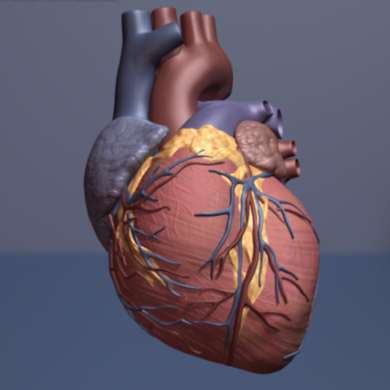Hypoxic inflammation blunts repair after heart attack

Inefficient cardiac repair after heart attacks is partially driven by a maladapted response to a low oxygen environment by immune cells, according to a Northwestern Medicine study published in the Journal of Experimental Medicine.
Inhibiting this pathway could be one way to promote better heart repair after heart attack, according to Edward Thorp, Ph.D., associate professor of Pathology in the Division of Experimental Pathology and senior author of the study.
“The repair function of immune cells are a key aspect of the body’s response to myocardial infarction,” said Thorp, who is also a professor of Pediatrics. “If we can target these cells, we might be able to prevent progression to heart failure.”
While most people in the United States survive a heart attack, many eventually suffer heart failure. A major cause of this progression is the body’s inability to properly repair cardiac cells in the heart, due to inflammation occurring after a heart attack.
This inflammation is caused by the low-oxygen environment seen in myocardial infarction, in which cells shift their metabolism from oxygen-driven mitochondrial energy production to the less efficient glycolytic system—the same system that causes fatigue in muscles when exercising.
“Normally, when oxygen is replete, they go through mitochondrial metabolism, but in a heart attack with limited oxygen, the cells need to ramp up this glycolytic response,” Thorp said.
While many scientists have studied this switch in cardiomyocytes—the common cardiac cells that make up the heart—how this works in immune cells such as macrophages was less clear. Hypoxia-induced transcription factors (HIFs) have previously been shown to sense the low-oxygen environment, but the mechanisms downstream of HIF1 and HIF2 remained unknown.
In the current study, Thorp and Matthew DeBerge, Ph.D., research assistant professor of Pathology and lead author of the study, used mouse models of heart attack and human patient samples to disentangle HIF1 and HIF2. The scientists individually deleted HIF1 and HIF2 in mice’s macrophage cells, subjected them to a low-oxygen environment with a specialized hypoxic chamber and measured mitochondrial and glycolytic metabolism.
The investigators found that when HIF1 senses a low-oxygen environment, it directly activates glycolytic metabolism, but this activation of glycolytic metabolism also brings negative consequences, according to Thorp.
“It’s coupled to an inflammatory reaction that is ultimately inefficient for cardiac repair,” Thorp said.
HIF2 on the other hand, takes a more roundabout path: it suppresses the mitochondria’s ability to use mitochondrial metabolism.
“It blunts the shuttling of metabolites from dying cells to be used in mitochondrial metabolism: in essence, shifting the macrophages towards the glycolytic response,” DeBerge said.
Deleting either HIF resulted in improved cardiac repair in models of heart attack, suggesting that this could be used to promote better heart repair after heart attack. However, deleting both HIFs actually resulted in worse outcomes, emphasizing the need for extreme precision if these approaches are to be utilized in human patients.
“You have to make sure you just target one and not the other, because accidentally hitting both could be catastrophic,” Thorp said.
Source: Read Full Article


